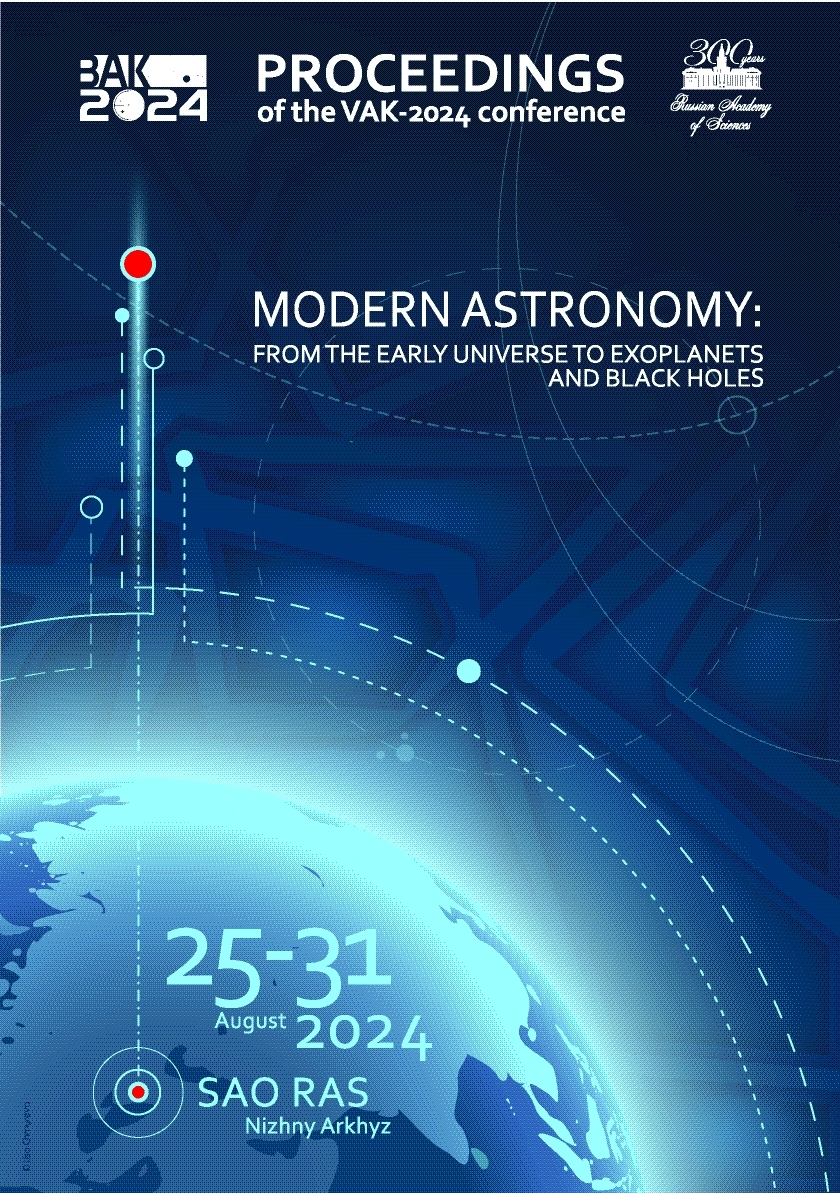Institute of Astronomy (INASAN)
UDC 53
UDC 520
UDC 521
UDC 523
UDC 524
UDC 52-1
UDC 52-6
CSCSTI 41.00
CSCSTI 29.35
CSCSTI 29.31
CSCSTI 29.33
CSCSTI 29.27
CSCSTI 29.05
Russian Classification of Professions by Education 03.06.01
Russian Classification of Professions by Education 03.05.01
Russian Classification of Professions by Education 03.04.03
Russian Library and Bibliographic Classification 2
Russian Library and Bibliographic Classification 223
Russian Trade and Bibliographic Classification 614
Russian Trade and Bibliographic Classification 6135
BISAC SCI004000 Astronomy
BISAC SCI005000 Physics / Astrophysics
Since July 2014, the European Space Agency (ESA) Gaia mission has been observing objects in the Solar System as part of its various scientific missions. The third data release (DR3) includes observations of more than 150,000 objects, including asteroids. Analysis of Gaia asteroid reflectance spectra has allowed for the first time to determine spectral types for many objects and to confirm or refine previously determined classes. The distribution of spectral groups coincides with the analysis of ground-based observations performed by other authors, with a sample overlap of less than 20 %. The main groups include the S-group ($\sim$60 %) and the C-group ($\sim$20—25 %). Mars-crossing objects are slightly more likely to have mixed mineralogy. This distribution remains constant over different ranges of object diameters. Analysis of the distribution of spectral groups by semi-major axis and perihelion distance may serve as indirect evidence for the prevalence of sublimation-dust activity in primitive asteroids.
astronomical databases: Gaia Data Release 3; asteroids: Near-Earth Asteroids, Mars-crossers
1. Binzel R., DeMeo F., Turtelboom E., et al., 2019, Icarus, 324, p. 41
2. Bus S. and Binzel R., 2002, Icarus, 158, 1, p. 146
3. Busarev S., Petrova E., Shcherbina M., et al., 2023, Solar System Research, 57, 5, p. 449
4. Gaia Collaboration, 2023, Astronomy & Astrophysics, 674, id. A1
5. Shcherbina M., Kovaleva D., Shustov B., 2024, Solar System Research, 58, 3, p. 359






